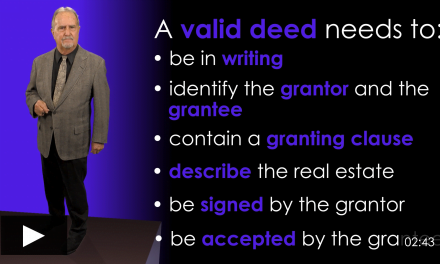California home sales volume experienced a slight bump in May 2023. This follows a dip during the prior month — atypical for the seasonal sales cycle and a symptom of the housing market’s recessionary conditions.
Just 26,300 new and resale home transactions closed escrow in California during May 2023, up 22% from the prior month but down 22% from a year earlier for all services involved in real estate sales. These weird swings are part of the ripple effect from the pandemic period economics.
Continuing the year-long declining trend, year-to-date (YTD) sales volume is a fee-crushing 33% below 2022 as of May 2023.
However, critically, the classic year-over-year comparisons lack usefulness today due to the uncharacteristically steep annual sales volume rise that occurred early in 2021 — a distortion fed by:
- homebuyers who had not planned on buying during the pandemic taking early advantage of historically low interest rates, thus cannibalizing future sales;
- homebuyer fear of missing out (FOMO) due to very low inventory for selection; and
- the personal income boost from stimulus cash given to most low to middle income consumers and businesses with employees.
Instead, compare today’s sales volume to the last pre-pandemic year: 2019.
Compared to 2019 — the last “normal” year for housing before the Pandemic Economy took control — home sales volume in 2022 was 12% lower. As of May 2023, sales volume year-to-date (YTD) is a weightier 26% below 2019 — and falling.
Related article:
The “right” interest rate is the market rate — higher than homebuyers think
The Pandemic bridge; an on-ramp to the advancing recession
Since 2019, home sales volume has been on a roller coaster of distorted ups and downs, as in a financial tsunami.
Behind the volatility was the shutdown of commerce with the onset of the 2020 pandemic followed by government action to buoy the housing market with record-low interest rates, an eviction and foreclosure moratorium and extra cash deposited directly into the pockets of renters and homebuyers.
All this federal and state action artificially drove up enthusiasm — prices — not just for real estate, but for assets of all types. Everyone was suddenly wealthier, for the moment. Tenants and buyers gave it up; landlords and sellers took it in. Necessary at the time.
As a result, consumer inflation — rent — and asset inflation — property prices — skyrocketed and personal savings plummeted to a decade’s low, leaving significant numbers of households unprepared for any coming financial misfortune.
We are now reaping the consequences. Even as the government’s stimulus measures were coming to an end in 2022, the economy was on the return path towards recession, which has now fully returned to work its worst magic on California’s housing market in 2023 and likely well into early 2026. Fallout from negative equity will continue for years into the recovery due primarily to lenders not permitting buyers to assume mortgages originated at low interest rates.
Related chart:
Home sales in 2023 and beyond
Home sales will continue to fall back for the remainder of 2023 due to:
- today’s higher mortgage interest rates, which have slashed buyer purchasing power (BPPI) by reducing the capital buyers can borrow to fund the maximum purchase price they are able to pay for property, down 13% from a year earlier and down 24% from 2019 as of May 2023;
- lower homeowner and tenant turnover as buyers face the dual dilemma of mortgage rates which limit the amounts borrowed as purchase-assist capital, and sellers’ sticky asking prices as above buyer capacity, while inventory increases to met away any FOMO;
- the inevitable return to increasing the short-term, inflation-fighting Fed rate presently stalled; and
- the broader economic recession, anticipated to bring noticeable job losses by early 2024.
Even as California reached a full jobs recovery from the 2020 pandemic recession at the end of 2022, another more significant economic recession is haltingly shaping up with the inflation battle to tighten its grip on the jobs and thus the housing markets. Watch for job losses to pile on heading into 2024.
The result: home sales volume and prices won’t begin a recovery from the California downturn until the years following 2025, more likely 2026. By then, our economy will head into its next sustainable expansion.
In the meantime, home sales volume will continue its decline in 2023. 2024 sales volume drop will depend on how steeply prices drop in 2023; if it’s fast down for prices, then expect an early bottom for sale volume by mid 2025, but not a fast recovery for home prices.
Related article:
Without the support of a steady rush of home sales since early 2022, home prices have plummeted, causing recently mortgaged homebuyers — including those who purchases with minimal down payments from 2019 through 2023 — to slip underwater at increasing frequency.
Unable to complete a traditional sale, more of these homes will head toward foreclosure. Initially, many will become real estate owned (REO) properties held by servicing agents of the remote mortgage holders. The REO issue will resolve itself by the appearance of short sales dependent on the negative equity homeowner locating a buyer, not the REO servicer. Eventually, negative equity homes will be sold in non-conventional sales platforms, and likely to pile up in excess MLS inventory due primarily to job loss, not pricing or mortgage lending conditions.
Expect a return of real estate speculators in 2025, maybe not until 2026, to provide a “dead cat” bounce to bring an end to the ongoing sales slump like what took place at the end of 2009 into the early 2010 stimulus period in the last recession. A sustainable recovery will take off with the return of end user homebuyers around 2026-2027. That will produce a flipper’s paradise unless we have a long-encouraged, now state enforced coastal surge in residential construction of SFRs and multi-family units.
Read more RPI analysis, see California home sales volume charts.













